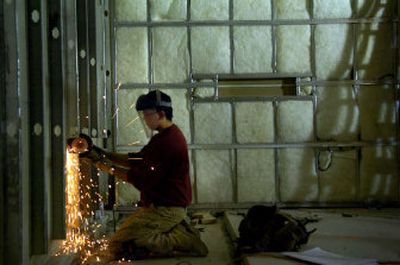Enhancing its image

Deaconess Medical Center is making room for a state-of-the-art magnetic resonance imaging system twice as powerful as any other in the Spokane area and creating a new imaging center to join in what is about to become a much more competitive market.
The 3 Tesla MRI will provide faster, clearer images than the industry standard 1.5 Tesla system, and can detect smaller abnormalities in the human body, greatly improving diagnostic capabilities.
The new “magnet” will be the cornerstone of the Spokane Advanced Imaging Institute, a partnership between Empire Health Services, Spokane Radiology Consultants and National Medical Development Inc., a Seattle firm specializing in outpatient MRI diagnostic centers, according to Bruce Butler, EHS vice president of corporate development.
“We have tended to be a quiet competitor in the past,” Butler said of Deaconess Imaging Services, which has been part of EHS health care in Spokane for many years. “You could say this is the beginning of less-quiet competition.”
Inland Imaging LLC, which runs several radiological centers in the region, had been Spokane’s only outpatient imaging provider until last summer when Spokane Radiology Consultants opened Spokane Imaging on the city’s north side, said Kathy Guy, administrator for the radiology group.
“We are not ashamed or afraid to compete with them,” Guy said, “and we see this as an example of how the community can benefit from that competition.”
Guy said Spokane Radiology Consultants is adding a neuroradiologist and another radiologist trained in magnetic resonance imaging for the new imaging center, which will be located in the first floor of the Deaconess Health and Education Center next door to the hospital.
National Medical’s management division will keep the 3 Tesla running and provide a support staff of about five people, according to a company spokesman.
Some doctors’ offices were relocated to make room for the 3 Tesla, which is expected to be up and running by the end of June. Currently, the 2,000-square-foot space is being remodeled at a cost of about $400,000, which includes magnetic shielding.
An MRI bombards the human body with radio waves, causing atoms in the body to emit their own “radio signals” when the MRI pulses stop. The atoms radiologists are interested in are hydrogen atoms, since the body is mostly water. These “excited” hydrogen atoms create an image that can be read by a radiologist. One of the advantages of MRI technology is that, unlike X-ray, the body does not have to be exposed to radioactive material.
Dr. Ron Cocchiarella, president of Spokane Radiology Consultants, said the 3 Tesla can do everything its predecessor, the 1.5 Tesla, can do either twice as fast or at twice the resolution. He estimated there were about a dozen 1.5 T MRIs in Spokane.
The 3 Tesla also has research applications.
Probably the most exciting aspect of the device is its diffusion tensor imaging capability, in which white matter tracts, the part of the brain and spinal cord responsible for information transmission, can be visualized. Following such tracts can help surgeons pinpoint tumors or other abnormalities, for example.
“Someone will say it’s too expensive, or ask what will it really add to the community,” Cocchiarella said of the 3 Tesla. “I see it really enhancing what we do. It will be good for Spokane to have.”
The nearest 3 Tesla MRIs are in Seattle, which has two, and Idaho Falls, which has one. The one at Deaconess cost more than $2 million, with a total cost of the Spokane Advanced Imaging Institute project estimated to be $3 million, Butler said.
“Our existing MRI was approaching the end of its useful life,” Butler said, adding that it would have had to be replaced in a couple of years anyway.
He said that National Medical was able to work out a “nice financing arrangement” with the manufacturer of the 3 Tesla, Phillips USA. The deal took more than a year to complete.
He did not expect the partners to hold the technological advantage for long.
“I would anticipate our competitor also getting one,” Butler said. “That’s often the way it happens.”
He also hinted at a continued business relationship between Empire Health Services and Spokane Radiology Consultants, including new investments.
“Once we have this one down, we can start thinking about other ways to work with SRC,” Butler said.